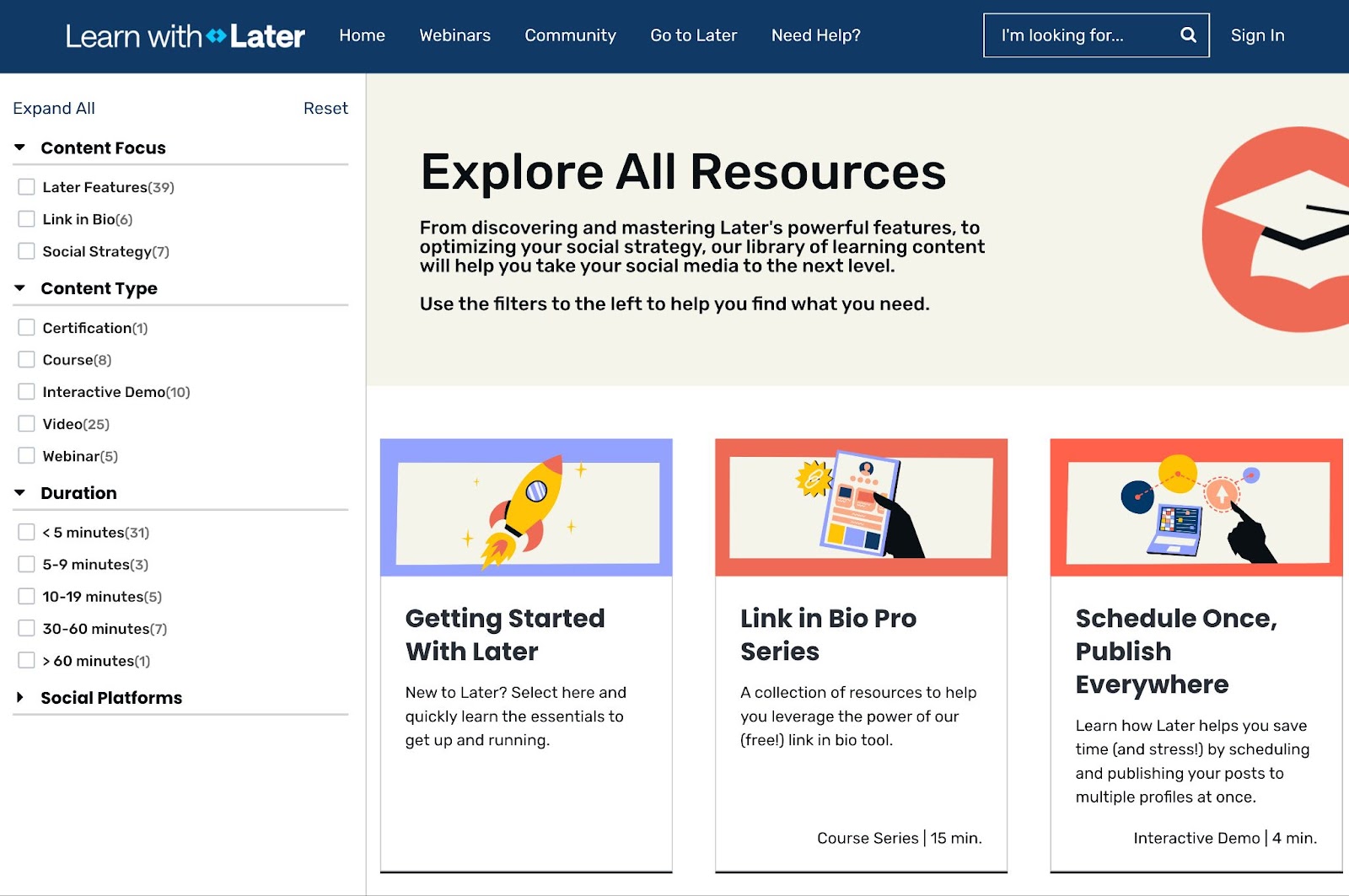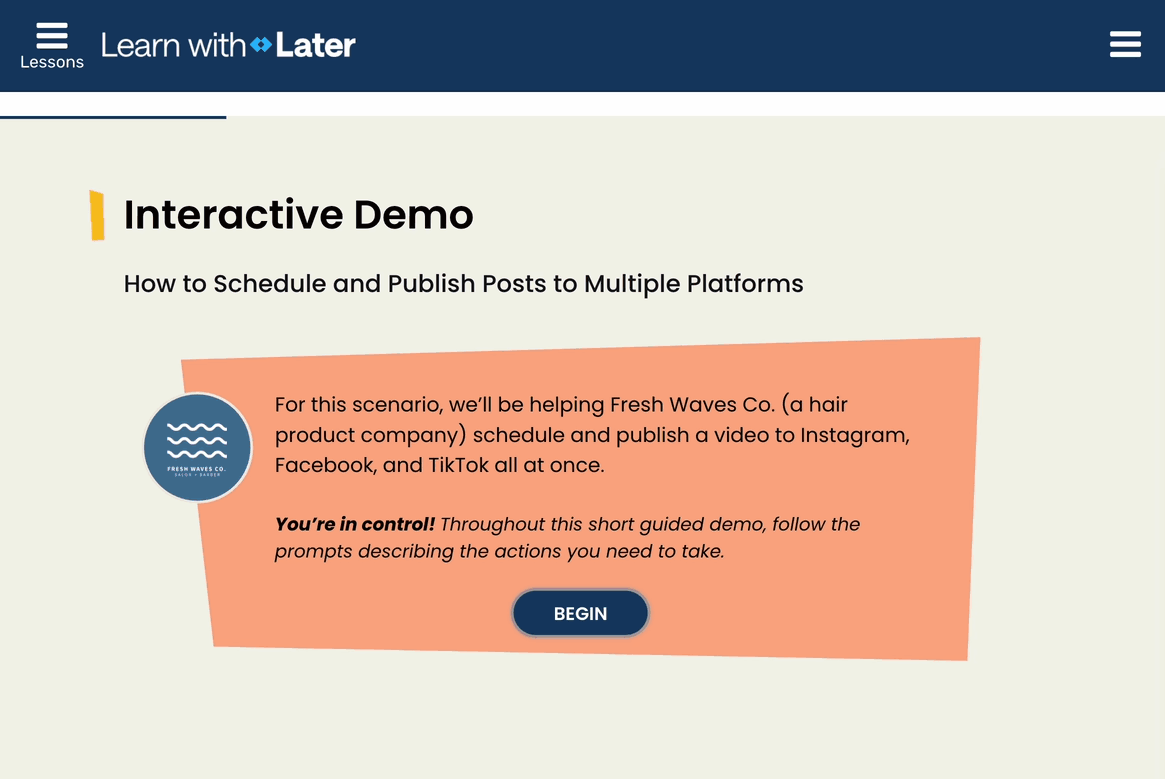Later Social's learning portal
When creating educational resources for your customers, you have to consider your users' different learning styles and preferences. Later Social nails this best practice in their learning portal.

When creating educational resources for your customers, you have to consider your users' different learning styles and preferences. Later Social nails this best practice in their learning portal.


When creating educational resources and training materials, it's essential to consider your users' different learning styles and preferences. A one-size-fits-all approach often leaves some learners struggling while others excel.
The key is building a robust learning portal that offers multiple paths to mastery through diverse content types and interactive experiences. This ensures you engage every kind of learner.
Later Social, a social media platform, nails all of these best practices in their learning portal.
So, we chatted with their Customer Success Manager, Bill Williams, and dug into what else we love about their learning portal.
While video tutorials may work for some, others prefer written guides or interactive walkthroughs. Different learning methods (e.g., courses, videos, micro-lessons, interactive tutorials, etc.) can accommodate diverse learning needs.

As Ramli John points out:
"One of the things that I like about Later’s learn portal is that it caters to beginners, intermediate, and advanced users. They have two-hour courses for users who want a deep dive on a topic and quick, interactive tutorials for beginners."
Simply telling or showing isn't enough - you need to let learners practice doing it.
Interactive sandboxes or game-like environments allow tactile learners to learn by doing in a risk-free space. This activates deeper understanding versus passive consumption.

Bill notes:
"Later’s interactive tutorial is great because it’s active rather than passive learning. You’re learning by doing without the technical uplift of creating a sandbox environment."
When offering multiple pathways, setting clear expectations for each learning activity is critical.
"They've given users a quick snapshot at the bottom of each of these, giving them how much level of effort, how much time it's gonna take to go through each piece of this content."
By listing expected completion times, prerequisites, and difficulty levels upfront, you empower learners to choose the right path for their needs and commitment level.
From Later's "Learn with Later" educational approach, we can learn:
- Offer diverse user education programs tailored to beginner through advanced levels.
- Set clear expectations upfront around the time and effort required.
- Enable active, hands-on learning through interactive environments.